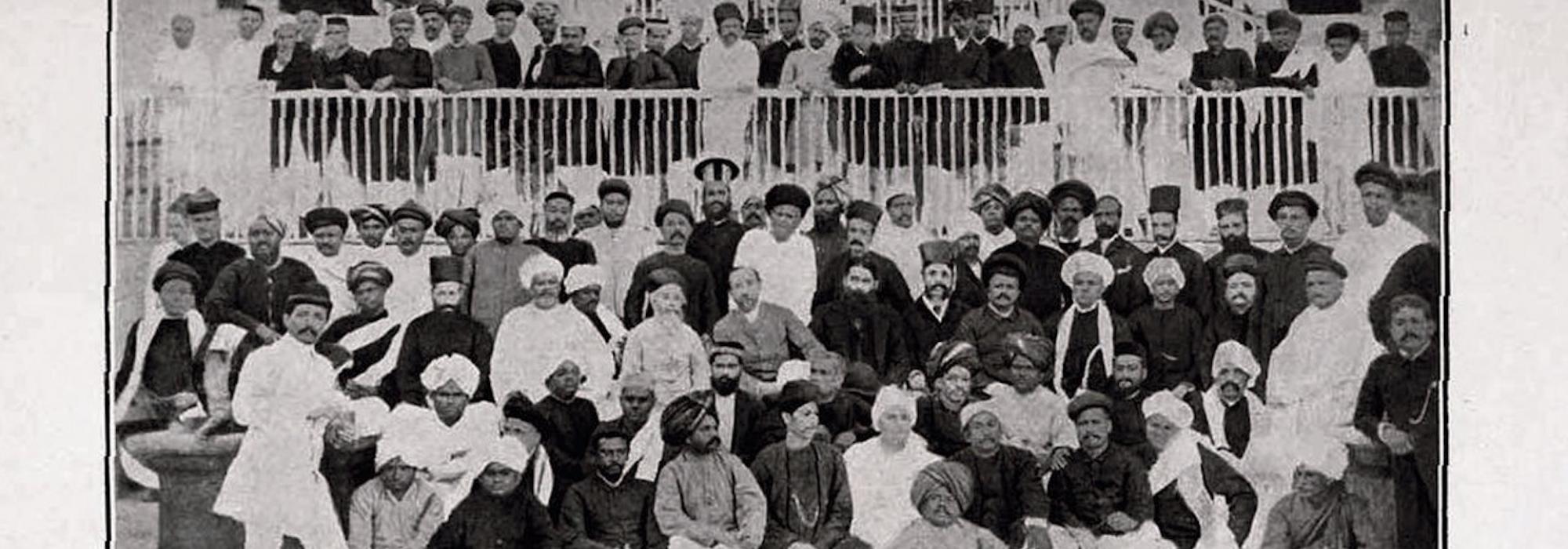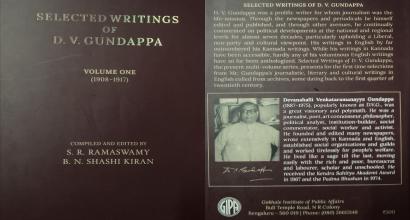Virtuous Selfishness
Now we have to consider another point. This feeling of national unity or what is commonly known as patriotism is also a kind of selfishness, isn’t it? Isn’t this feeling imbued with even a little amount of egoism and attachment? These questions are but obvious. Neither do we need to neglect such questions. Love for one’s people, devotion towards one’s motherland—both these are dependent on “one’s.” The moment the word “mine” comes into play, it is inevitably accompanied by “not mine,” or “that which is not mine.” However, this feeling doesn’t become objectionable merely due to such factors. Selfishness can be categorised as sātvika rājasika and tāmasika. The selfishness which contracts life and drags it down to the level of pettiness is tāmasika or rājasika. The selfishness which expands the gamut of our life and elevates it from pettiness is sātvika selfishness. When the devotee prays to bhagavān, he remains selfish. However, that selfishness will culminate in the fruition of his life. Selfishness of the collective is similar to this. It lifts us up from individual selfishness. It is selfishness directed at the well-being of others; it is selfishness that makes an individual merge with the collective. Therefore, it is sātvika. It bodes well for life.
It is not improbable for selfishness expressed in the form of patriotism to transform into rājasa or tāmasa. “Our country is the greatest. Others are inferior.” “It is enough only if our country stands to gain. We don’t need to bother if other countries are destroyed.” The history of the last fifty or sixty years clearly proves that it is not improbable for such extreme passions to arise.
This is the principle that we must keep in mind: the feeling of national oneness or national unity makes an individual forget his selfishness, transforms it into collective selfishness and thereby removes the taint of selfishness from him. It enlarges his life-view and merges the individual with the life-collective. Perhaps Valmiki Maharshi had this view in mind when he wrote these two lovely and apt adjectives in praise of Sri Ramachandra:
rakṣitā jīvalokasya ||
svajanasya ca rakṣitā ||
In this manner, the principle of love for one’s people has evolved in our country from time immemorial.
In the era of Sri Ramachandra, many Dharma-s were in vogue. The phrase, “sve sve dharme” indicates this. No matter the diversity of sect and community, all people are our own. All of it is my family. Indeed, it is one family—this feeling has come down to us from that era, and even the eras preceding it. It is the seed of national feeling. The first achievement of the National Congress was in rejuvenating this national feeling.
Five Purposes of Congress
The summary of the Congress leaders who emerged in the first thirty years of its existence can be classified under five headings:
1. India’s Unity: This country must be regarded as one entity in the eyes of other nations. Our people must conduct themselves in a manner that shows that they are all affectionate members of the same family.
2. Self-Rule: Key positions of governmental authority must be transferred from foreign hands to that of Indians. All administration must be carried out by Indians, for Indians.
3. Economic Development: Agriculture and industry of this country must progress. The British are not paying enough attention to our country’s industrial wealth. Science and technology must grow.
4. Social Reform: Our people must reform their ancient customs and traditions in tune with changed circumstances.
5. Dominion Status: India must obtain dominion status in the British Empire akin to Canada, Australia and other nations.
In the Gandhian Era
The aforementioned were the broad purposes of the founders of the Congress. However, after Mahatma Gandhi firmly established himself in national politics, i.e., after 1915, these purposes underwent a significant change.
1. First, the question of India’s unity and integrity. Nobody has rejected this purpose. Everyone pays it lip service. However, on the ground, it appears that everyone seems to have forgotten it.
2. The second point of self-rule has already been implemented. However, government authorities before 1915 were authorities in the real sense. They were largely independent. They had the genuine capacity to exercise both their punitive and obligatory powers strictly in line with the law and private conscience. Today’s officials do not have authority. They are subordinates. They are subordinates of representative assemblies.
3. The third relates to economic development or wealth-creation. Our earlier administrators held the firm view that economic development must be done within the confines of our existing financial condition. Today, we have the dominance of five-year plans. If the treasury doesn’t have money, impose new taxes, raise loans from foreign countries.
4. The fourth point is social reform. In the previous (i.e. pre-Gandhian) era, ancient traditions and customs still commanded some respect. Later, it eroded to an alarming extent.
5. The fifth is dominion status. Freedom fighters and nationalists of the previous generation were of the view that complete (and sudden) independence was too premature to existing circumstances, and that political progress had to occur in a systematic, step-by-step fashion. Now the country has attained full independence. Therefore, we can now forget the view of such nationalists.
Topic of Discourse
I narrated all of this in order to introduce you to our present situation. We can estimate the nature of the current national service from these circumstances. I wish to emphasise on the following three elements:
1. National unity
2. Public opinion
3. Reformist mindset
It is not my intent to dabble in politics here. The venue of this lecture is a university campus. It is my long-held opinion that the atmosphere of education is a highly unsuitable place for anxieties and passions. It is also my opinion that educational institutions must create an environment that fosters a calm and dispassionate pursuit of learning instead of stoking anxieties and fury. This is not the appropriate place to raise the objections and criticisms whose rightful venue is elsewhere. Therefore, I will try to submit before you some of the points I have in mind in a brief manner without giving way to anger.
To be continued









































